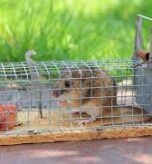Introduction
Beekeeping offers a rewarding avenue for environmental stewardship, honey production, and crucial pollination services. Successful apiculture,however,necessitates a thorough understanding of various beehive designs and diligent management practices tailored to ensure colony health and productivity. This guide provides a professional overview of common beehive types and essential considerations for aspiring and established beekeepers.
Understanding Beehive Types
The choice of beehive is a focal point for any beekeeping operation, influencing management techniques and the overall well-being of the colony. While numerous designs exist, three main types are widely recognized and utilized today, alongside several innovative alternatives.
Langstroth Hive
The Langstroth hive is the most prevalent beehive design globally, particularly in the United States, and is often the image that comes to mind when one pictures a beehive. Invented by Reverend Lorenzo Lorraine Langstroth in 1851, its fundamental innovation lies in the use of vertically-hanging frames that respect “bee space” – precise gaps (between 1/4″ and 3/8″) that bees will neither fill with comb nor propolis, enabling easy frame removal and inspection.
Pros:
• Modular and Expandable: Consists of stackable boxes (supers) of various depths, allowing for easy expansion as the colony grows.
• Scalability: Highly popular among commercial beekeepers due to its standardization and ease of transport for pollination services.
• Standardized Components: Dimensions are well-documented and standard, facilitating the purchase and interchangeability of components from different manufacturers.
• Honey Extraction: Honey can be extracted from framed honeycombs using a centrifugal extractor.
Cons:
• Heavy Lifting: Adding new boxes, particularly under existing full ones, may necessitate a lifting device.
• Management Techniques: Some argue that its commercial management techniques are less suited for backyard beekeeping.
Warre Hive
The Warre hive, named after French monk Abbé Émile Warré, is designed to mimic the natural cavity of a hollow tree, providing a more natural environment for bees. It features square boxes, somewhat resembling a miniature Langstroth hive.
Pros:
• Bee-Centric Design: Promotes a natural environment, making it suitable for beekeepers who prefer less frequent intervention.
• Low-Maintenance: Generally considered a low-maintenance hive type.
• Foundationless Beekeeping: Utilizes simple slats on top of each box, from which bees build comb vertically downwards, inherently supporting foundationless practices.
Cons:
• Lifting Challenges: New boxes are added beneath existing ones, which can make lifting heavy stacks a challenge.
• Less Common: Not as widely used as Langstroth hives, potentially limiting support and readily available components.
Top Bar Hive
Top bar hives are characterized by horizontal bars laid across the top of a trough-shaped body, allowing bees to build their comb naturally without frames or foundation.
Pros:
• Simplicity and Cost-Effectiveness: Often considered the simplest and most forgiving hive to build, sometimes even from reclaimed materials.
• Natural Beekeeping: Encourages bees to build natural comb, aligning with organic and sustainable practices.
• Ease of Maintenance: User-friendly and requires minimal specialized equipment for maintenance. Honey is harvested by crushing the comb, eliminating the need for an extractor.
• Comb Cycling Benefits: Regular culling of old combs keeps the hive healthy by removing wax-soluble toxins and stimulating wax-making glands.
Cons:
• Cross Combing: Bees may occasionally attach comb to the hive walls, leading to cross-combing.
• Not Easily Transportable: The design makes them less ideal for frequent movement.
• Less Commercial Support: While growing in popularity, support systems and publications for top-bar beekeepers are less extensive compared to Langstroth.
Other Notable Hive Types
• Hex Hive: A stackable, hexagonal hive that uses three-sided frames and top bars, designed to eliminate cold spots through natural air circulation.
• Dome Hive: A curved top bar hive inspired by the German Sun Hive, promoting a healthy colony with few hiding places for pests due to its smooth interior.
• Golden Hive (Einraumbeute): A one-room hive with deep, large frames, designed for bee health and allowing the queen free movement. It utilizes a wax cloth to minimize disturbance during inspection.
Key Considerations for Beekeeping Success
Successful beekeeping extends beyond hive selection, encompassing a holistic approach to colony health, apiary management, and community relations.
Location and Placement
Strategic hive placement is paramount, particularly in urban and suburban environments.
• Activity Avoidance: Position hive entrances away from high-traffic areas, neighbor’s yards, pools, or compost bins, maintaining a 10-foot clear radius of minimal daily activity.
• Elevation: Elevating hives, such as on rooftops, can make them almost undetectable from the ground and keep bees out of immediate human contact.
• Water and Forage: Ensure access to a consistent, clean water source year-round, especially in hot or dry conditions. Provide diverse floral resources that bloom throughout the foraging season. Encourage neighbors to plant bee-friendly gardens to enhance forage availability.
• Local Regulations: Always comply with local, state, and federal ordinances regarding hive placement and density.
Management Philosophy and Operation Size
Beekeepers’ management practices exist on a continuum, influenced significantly by their philosophy regarding in-hive chemicals and the scale of their operation.
• Natural Beekeepers: Typically avoid non-bee produced products, preferring natural or organic methods for pest control and feeding colonies honey. They often prioritize enjoyment, teaching, or research over income.
• Organic Beekeepers: Tend to use alternative methods for pest control, such as freezing comb or utilizing screened bottom boards.
• Conventional Beekeepers: More inclined to use synthetic chemicals and antibiotics for pest and pathogen control, and frequently replace queens. Commercial and sideline beekeepers, with larger operations, predominantly fall into this category due to the efficiency and effectiveness of these treatments for large-scale management and improved colony survival rates.
Health and Disease Prevention
Maintaining hive health is critical due to widespread threats like parasites, pests, diseases, pesticides, and inadequate nutrition.
• Integrated Pest Management (IPM): This ecosystem-based strategy emphasizes prevention and employs a suite of techniques, including cultural practices, mechanical/physical methods, biological control, and chemical treatments, applied only when pest populations exceed economic thresholds.
• Varroa Mites: Varroa destructor is the most devastating ectoparasite, vectoring viruses and requiring vigilant monitoring (e.g., alcohol wash, powdered sugar shake) and timely intervention. Rotating chemical treatments is crucial to prevent resistance.
• Diseases: Beekeepers must recognize signs of bacterial diseases like American Foulbrood (AFB) and European Foulbrood (EFB), and fungal diseases like Chalkbrood, as well as pests like Small Hive Beetles (SHB). Early detection and appropriate action, including reporting to authorities for AFB, are vital.
• Comb Replacement: Regularly replacing older, darker brood frames (2-4 per colony annually or ~20%) helps limit chemical buildup and disease transmission.
• Biosecurity: Disinfecting tools, avoiding used equipment unless inspected, and preventing robbing behavior are essential biosecurity measures.
Equipment and Maintenance
Investing in and properly maintaining beekeeping equipment is essential for safety and hive well-being.
• Protective Gear: Always use protective suits, veils, and gloves to prevent stings.
• Tool Cleanliness: Keep hive tools clean to avoid contamination.
• Hive Painting: Paint the exterior surfaces of hives with non-toxic, light-colored paints (white or yellow) to reflect heat and protect the wood from weather elements, but do not paint the interior where bees live.
Record Keeping
Maintaining detailed records of hive status, management actions, and observations is invaluable. This data aids in understanding colony progression, informing future decisions, and contributing to scientific understanding of bee populations.
Neighbor Relations
Effective communication with neighbors is crucial, especially in populated areas.
• Transparency: Inform neighbors about your hives, answer their questions, and invite them to see your apiary to reduce fears.
• Pesticide Awareness: Educate neighbors about the risks of pesticides to bees and encourage them to avoid spraying flowering plants.
• Honey Sharing: Offering honey can foster good relationships and acceptance of backyard beekeeping.
Conclusion
Embarking on a beekeeping journey is a profound commitment that intertwines with ecological health and agricultural productivity. The selection of an appropriate beehive type, coupled with a commitment to best management practices and continuous learning, forms the bedrock of a thriving apiary. By carefully considering location, proactively managing pests and diseases through IPM, maintaining equipment, keeping diligent records, and fostering positive community relations, beekeepers can ensure the health and longevity of their colonies, contributing positively to both their local environment and broader ecosystems.



